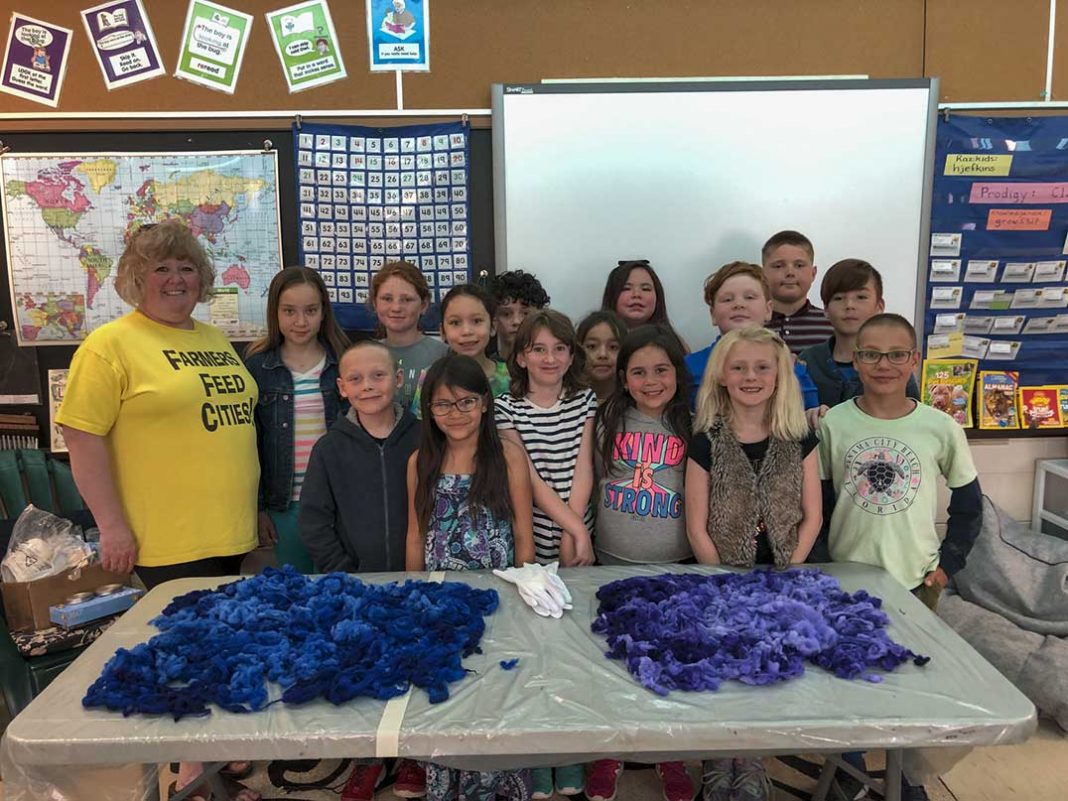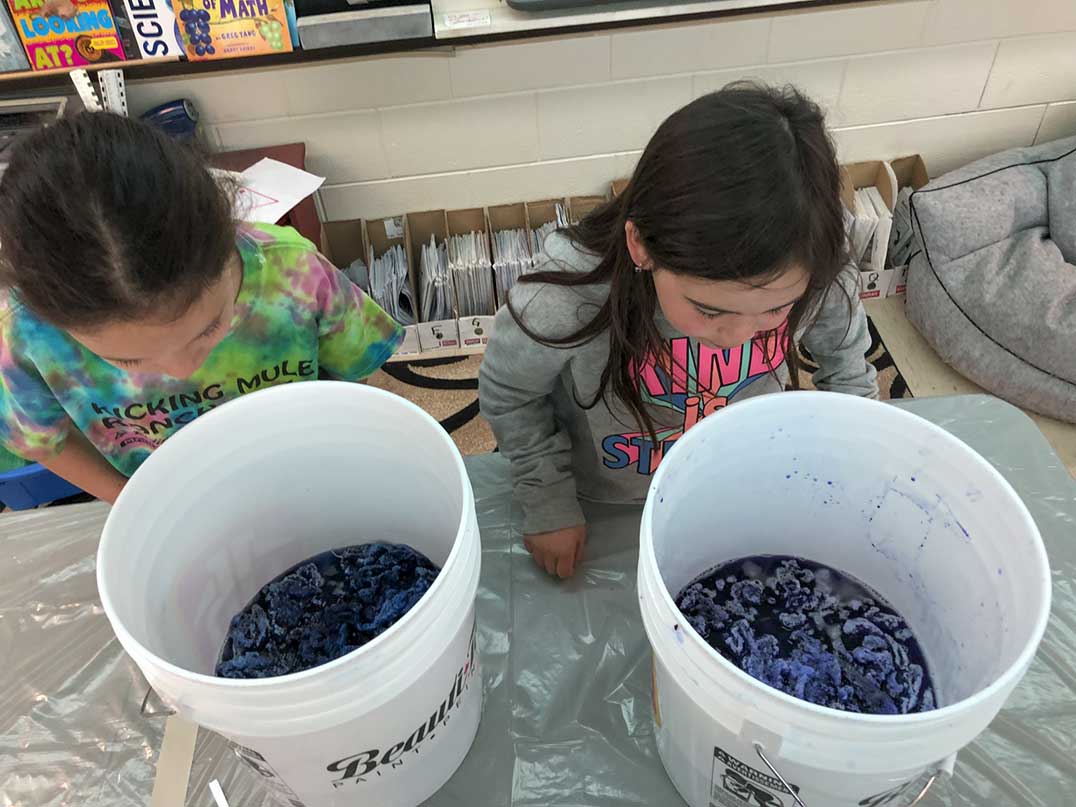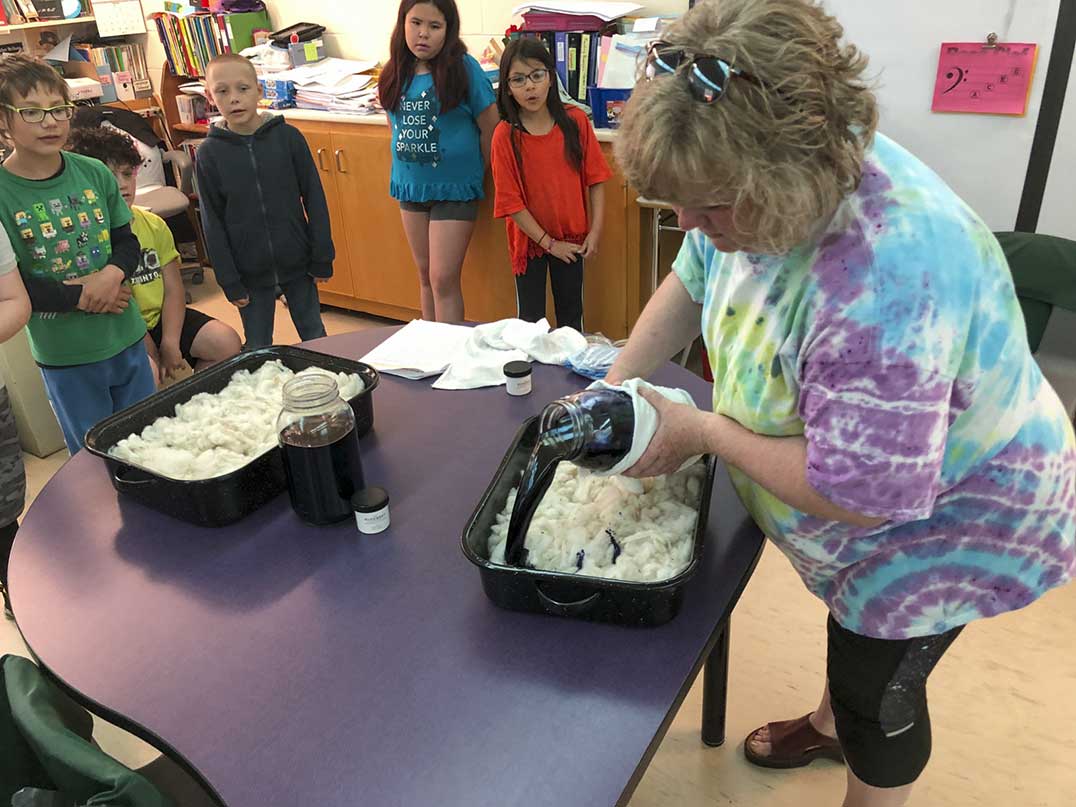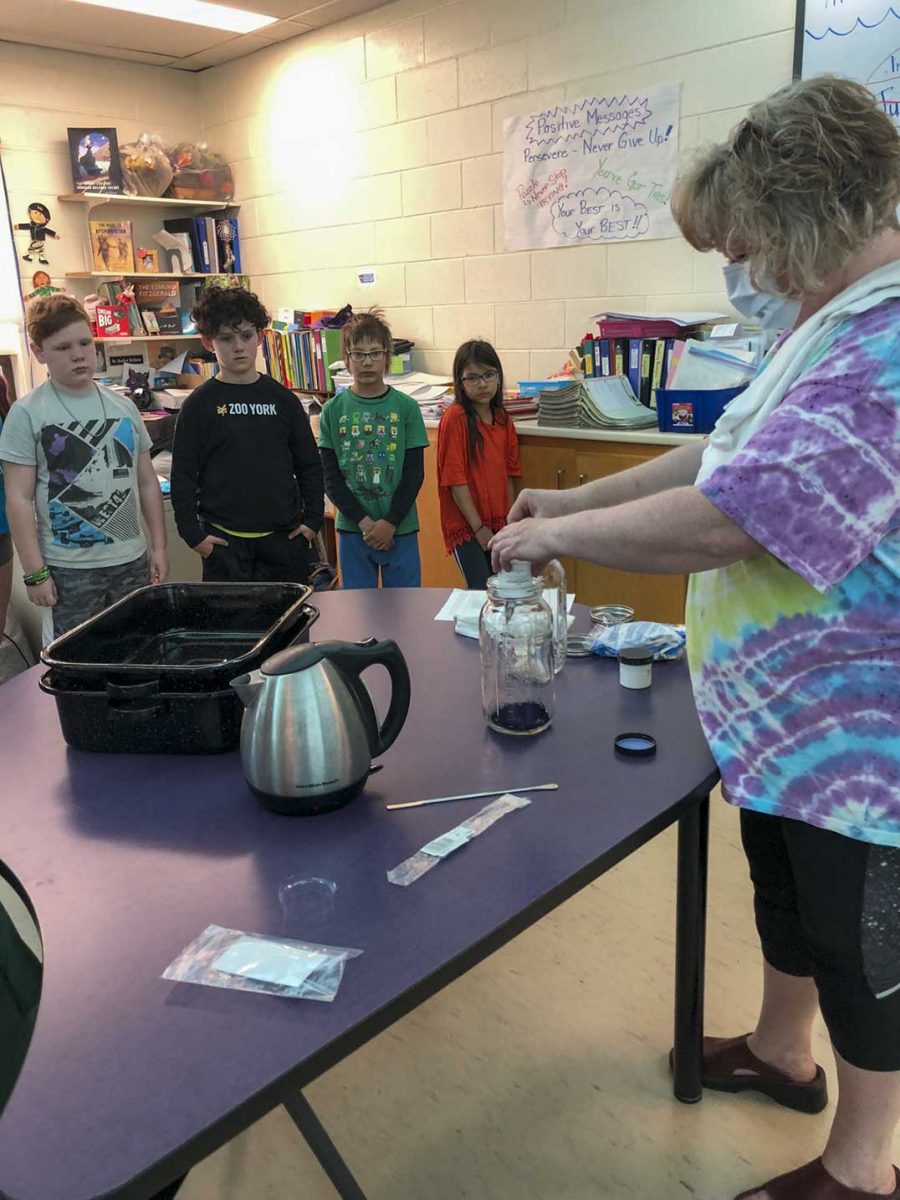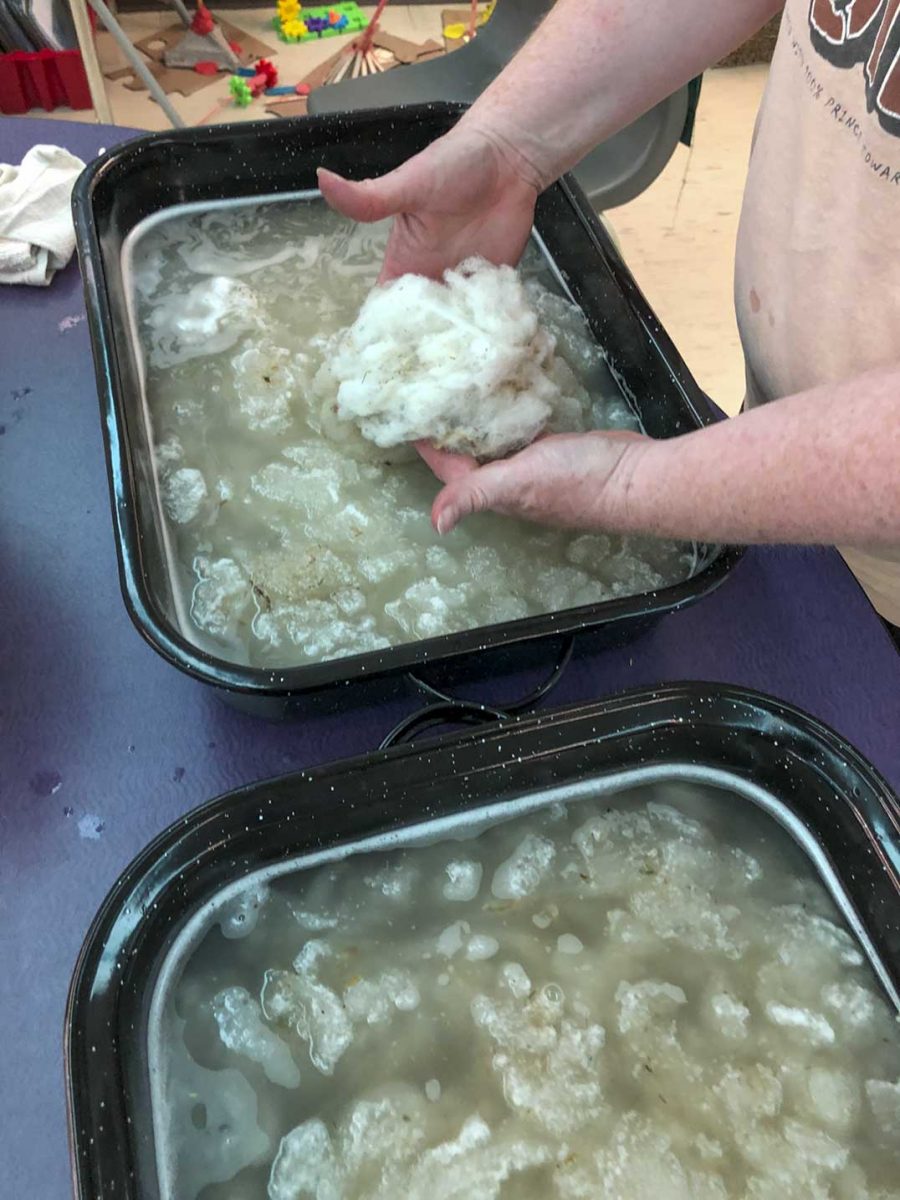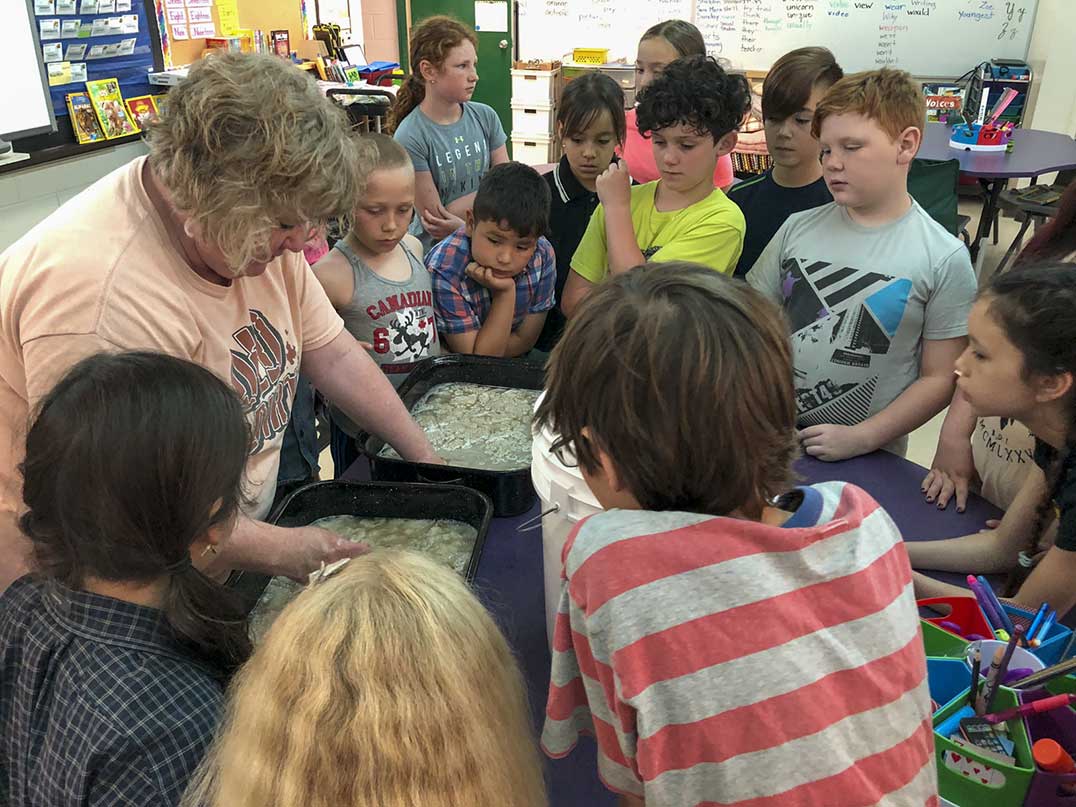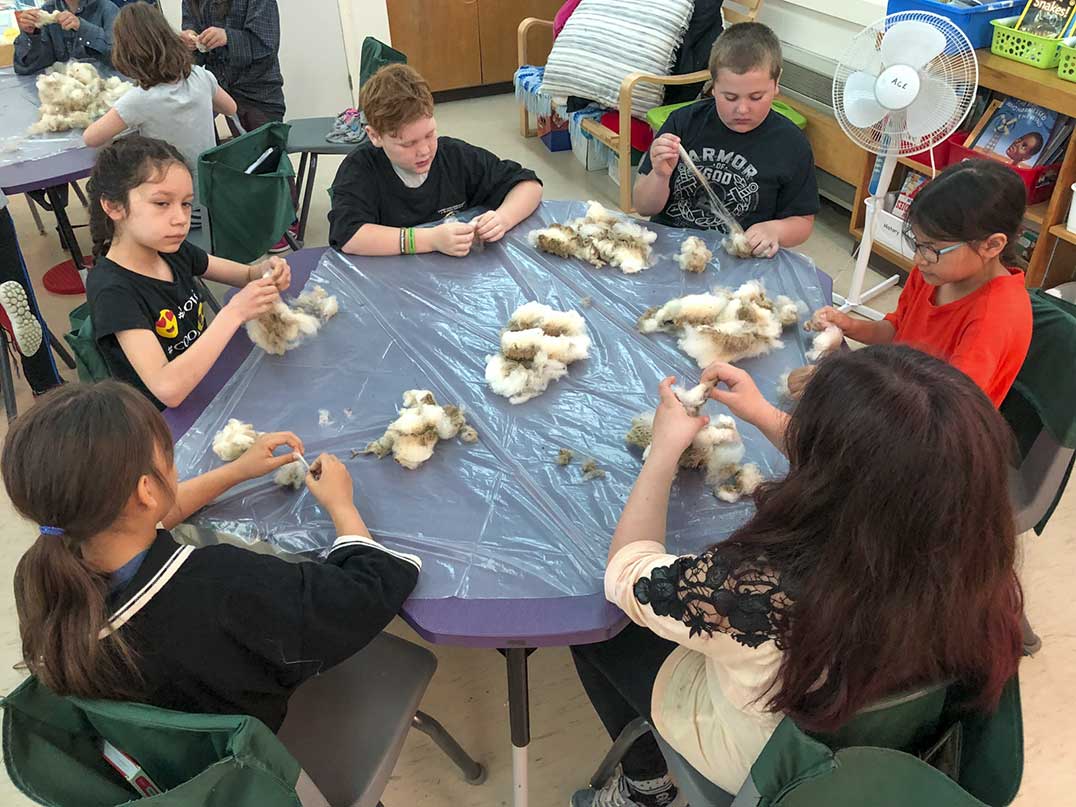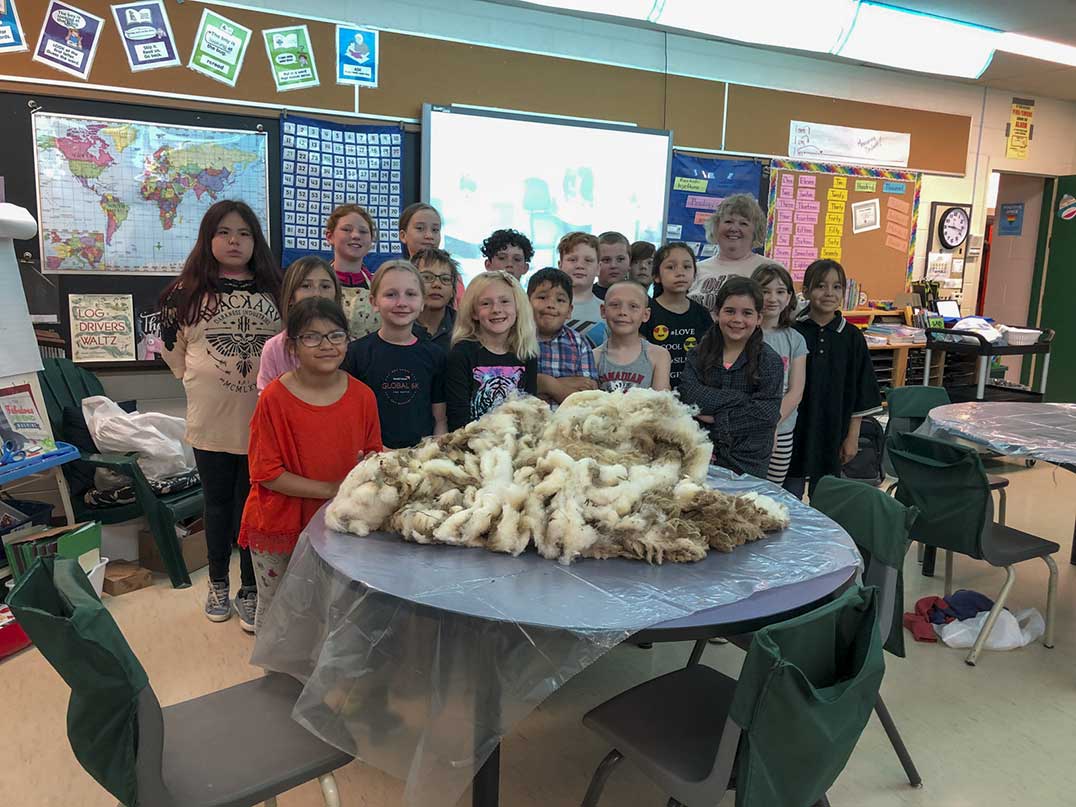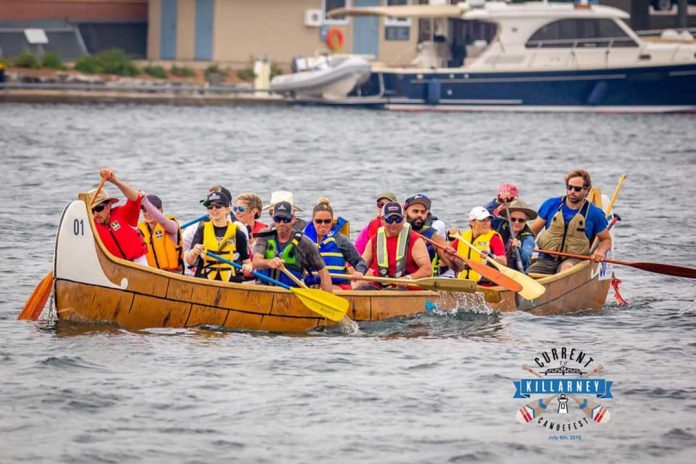MANITOWANING – This year Heather Jefkins’ Grade 3/4 class at Assiginack Public School has been working on lots of traditional fibre arts projects.
“We have learned about quilting, weaving, spinning and cross-stitching,” Ms. Jefkins says. “We have had several guests in our room this year who helped us learn about different traditional craft and art forms. We have had a chance to use both modern and traditional equipment and to see how much work goes into traditional crafts.”
In May, Bob Case (local farmer and APS bus driver) heard about the class project and offered to give the students a freshly shorn sheep fleece to help them learn more about how yarn is created. Once the ewe was shorn, Mr. Case brought the class the fleece and they got ready to learn more about preparing it.
“Fleece Cleaning Day” was June 10.
“First we had to pick the fleece, which means removing all the yucky bits (dried manure and bits of hay and seeds), and then we had to wash it,” Ms. Jefkins explains. “It had to be washed and rinsed three times! We learned about how natural sheep fleece contains lanolin and it needs to be removed before the dye will take to the fibre. Once it was clean then we were able to dye our fleece.”
Cheri, of ACME Fibres from Fort Erie, donated all the specialized dyeing equipment and dyes for our project.
“She said she ‘had a soft spot for rural schools’ because she went to one herself, and was happy to help support our project,” Ms. Jefkins says. “We also used materials that were easily located: buckets, a granite turkey roaster and large Mason jars!”
Dyeing Day was June 11. The class first had to mix up the dyes, which required a lot of hot water, then they put the fleece in two big pans and covered it with the dyes. After the fleece was soaked in dye it had to simmer (but not boil) for 3.5 hours. It had to cool down overnight. Vinegar was used to help set the dye, so the Grade 3/4 room had the aroma of pickles.
On Wednesday, June 12 all the fleece had to be rinsed and washed. Once the water ran clear, the class knew the excess dye was rinsed out of it. After that, the students pressed all the water out of it and put it out to dry.
On Monday, June 17 students began carding the wool using special Ashford carders made in New Zealand. Once the wool was carded, students learned how to use a drop spindle to spin the wool into yarn.
“The worst part was taking the poop out of the wool,” Darius says of the experience.
Lily adds, “The best part was dying the fleece.”
“I would like to do it again because it’s lots of fun,” Maddy notes.
“It was messy, but fun!” Keenan exclaims.
“As a someone who has always been involved with traditional crafts and knits and weaves myself, I really wanted to have my students learn about these traditional skills,” Ms. Jefkins adds. “I knew that a project such as this had lots of ties to the Ontario Social Studies Curriculum, such as looking at the challenges facing settler families had in producing clothing and bedding (Grade 3) and looking at daily life in early societies (Grade 4), and how the production of fibre and fabric was labour intensive before industrialization and mass production became common place in the 20th Century.”
“I am a knitter and a weaver, and I sometimes bring in items I have made to show my students when I am discussing different topics such as patterning in math, or the use of colour in design,” the teacher continues. “I thought my students would really enjoy learning about quilting design from Jackie White, so we worked together to create a set of lessons for my class, tied to the early settlement of Ontario. The idea for the ‘big’ project really started when some of my students asked questions about what I was going to be making next, and I started talking about my loom. I decided it would be interesting to teach them how to weave, so I brought in my small rigid heddle loom for them to try. We ended up making a scarf for APS Principal Heather Pennie. From there, the project just grew from student-led inquiry questions and research. I am currently part of the Canadian Museum of History’s National Teacher Advisory Group (CMH TAG), and wanted to have my students use the current online resources from the CMH in order to be able to provide more input at the next TAG meeting. The CMH is looking for educator input as it redevelops these educational resources for a national audience, and I felt that having my students use the current resource would provide me with lots of ideas for suggestions for the new resource. As my students looked at different artifacts through the CMH website, they asked more questions, and we were led to explore different traditional fibre arts, and how they are still relevant which, in turn, led to the ‘From Sheep to Yarn’ culminating project we are completing this June.”
Supporters of this project include: Jackie White, quilting; Lee Stach, Fraser Road Embroidery, cross-stitch; Susan Hart, spinning and fibre production; Anne Leith, spinning and fibre production; Jane Little, spinning and fibre production; Bob Case, fleece donation; ACME Fibres, dyes and equipment/technical support; and The Fibre Garden, carding and spinning equipment.

